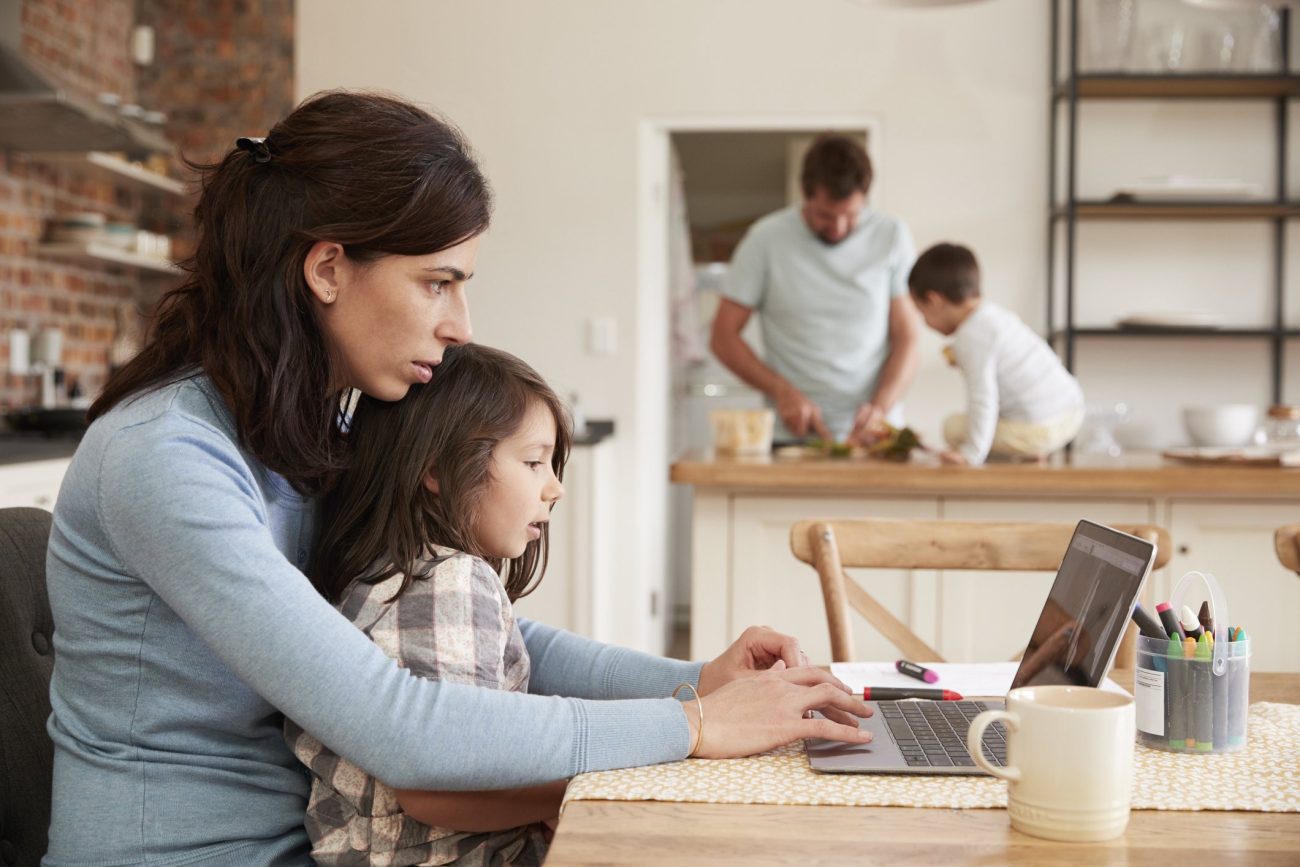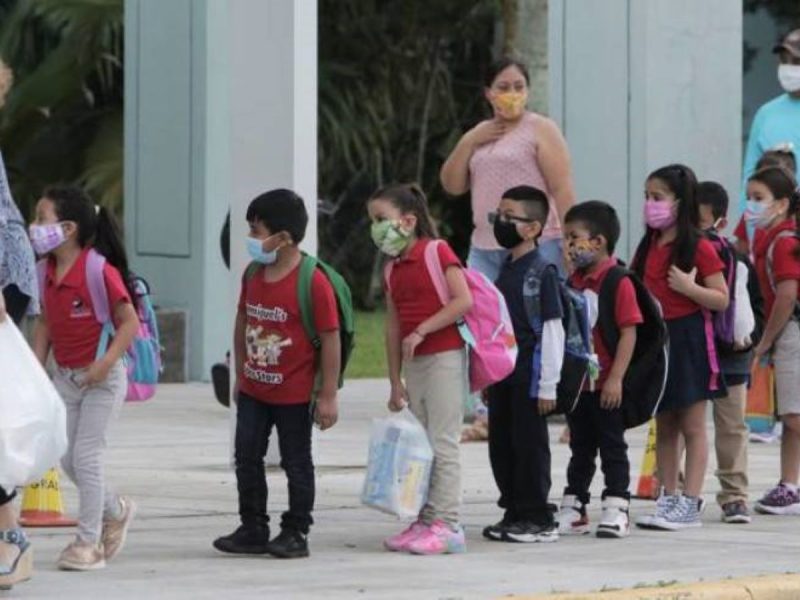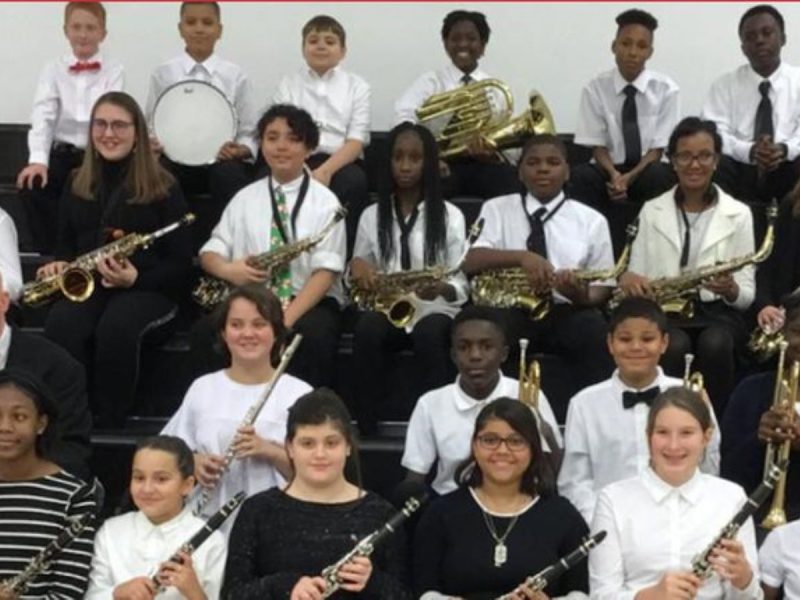‘This is hell’: Parents and kids hate online classes. Going back to school likely will include more of it.
By Erin Richards USA TODAY June 29, 2020
In his suburban New Jersey home-turned-classroom this spring, parent Don Seaman quickly found himself in the role of household vice principal.
While his wife holed up in the bedroom to work each day, Seaman, a media and marketing professional, worked from the family room where he could supervise his children’s virtual learning. A similar scene played out in millions of American homes after schools shuttered and moved classes online to contain the coronavirus.
Now that the year’s over, Seaman has strong feelings about the experience: Despite the best efforts of teachers, virtual learning didn’t work. At least not uniformly, if his three children in elementary, middle and high school are any indication.
“The older kids were saying, ‘This is hell,’” Seaman said. “My kids feel isolated, and they can’t keep up, and they’re struggling with it.”
But like it or not, remote instruction and virtual learning are likely to continue for millions of children this fall. That’s because most districts can’t observe physical distancing with all students attending class together in-person.
Many reopening plans rely on hybrid learning schedules, where students attend school on alternating days or weeks and learn from home on the other days, on a computer where feasible.
Yet America’s educators know little about how to improve the online learning experience – and many districts are spending almost no time trying to figure it out before the fall term starts.
The stakes are high. In the event of a spike in infections — a real possibility, as mounting cases in states such as Texas and Florida indicate — distance learning in affected regions likely will become universal again. And students can’t afford to lose more ground, as many did when classes went online this spring. Millions simply disappeared or logged on but didn’t participate.
Nationwide, only one in three districts expected teachers to provide remote instruction and monitor students’ academic engagement this spring, according to a study that tracked 477 districts.
“There wasn’t a lot in the way of interventions for kids who were falling off,” said Robin Lake, director of the Center for Reinventing Education, a nonpartisan research group in Washington state that conducted the study.
“That’s a huge problem in distance learning.”
District leaders are understandably preoccupied with logistical planning for reopening schools while also keeping coronavirus at bay.
Some parents worried about their kids’ emotional health and their own ability to work are pressuring schools for a return to in-person classes. And face-to-face instruction could provide stronger support for vulnerable students who fell the furthest behind this spring.
The American Academy of Pediatrics is urging schools to prioritize in-person classes because of the negative social, emotional and academic effects of school closures.
“Policies to mitigate the spread of COVID-19 within schools must be balanced with the known harms to children, adolescents, families, and the community by keeping children at home,” says new guidance from the organization representing about 67,000 pediatricians.
Nationwide, parents are split on sending their children back to classrooms. A slight majority — 56% — said they want their children to attend schools full time this fall, according to a Gallup poll this month. But in a USA TODAY poll in late May, 6 in 10 parents said they were more likely to pursue at-home learning options.
Some education experts think districts should double-down on improving remote and virtual instruction, rather than figuring out new ways to have students attend school part-time.
“There’s a risk that teachers will be overwhelmed, and the resulting hybrid could be of lower quality than a strong early commitment to remote instruction,” said Aaron Pallas, a professor of sociology and education at Columbia University’s Teachers College.
‘Surprising lack of research’ on what works in online learning
As millions of teachers and families discovered this fall, learning virtually is hard. For many students, it’s difficult to engage with classmates and participate in class. For many teachers, it’s difficult to help struggling students and form solid relationships with only video, chat and email. Exhausted parents-turned-tutors, especially those trying also to work from home, say it’s not sustainable.
Unfortunately, solutions are not readily at hand.
“There is a surprising lack of research into what techniques make for high-quality virtual instruction,” said Brian Fitzpatrick, a sociologist at the University of Notre Dame and former middle-school teacher. “The COVID pandemic has certainly drawn attention to the need to identify best practices.”
It’s tempting to turn for help to America’s longest-running experiment with online schooling: virtual charter schools, which have been around since the 1990s and can be run by districts or private management companies. Around 300,000 students nationwide were enrolled in full-time virtual schools in the 2017-18 school year, according to the National Education Policy Center, a left-learning education think tank in Colorado.
On average, their academic outcomes are overwhelmingly low. When students switch to virtual charter schools from brick-and-mortar schools, their achievement drops, recent studies show. One was conducted by Fitzpatrick, who compared outcomes for students attending virtual and traditional schools in Indiana.
“We find the impact of attending a virtual charter on student achievement is uniformly and profoundly negative,” Fitzpatrick and his colleagues wrote this month in a post for the Brookings Institution, a liberal think tank.
Still, business is up at virtual charters since the pandemic began, said company leaders at Connections Academyand K12 Inc., which power a majority of virtual charters in America.
They attributed low achievement and graduation rates over the years to low-achieving students transferring in from traditional schools.
“Less than 20% of students who come to us are learning at the grade level they entered,” said Nate Davis, CEO of K12.
For other students, particularly those with a committed parent in the home, virtual schooling can be highly tailored and effective, said Mickey Revenaugh, co-founder of Connections.
“There’s a critical role the family plays,” she said. “When kids are little you need that adult presence. And they need to be communicating with that child’s teacher on a regular basis.”
Comfort with online learning depended on experience
Leaders in districts with more experience using blended or online learning platforms feel they’re further along in preparing for fall.
Broward County, Florida’s sixth-largest district, has hosted its own virtual school since 2001. When school moved online this spring, the district offered ongoing workshops for teachers in traditional schools to get started with Canvas, the district’s online learning platform, said Daryl Diamond, director of innovative learning. The district also trained teachers to use web conferencing tools for teaching, he added.
Before spring break, only about half the district’s teachers had published courses on Canvas, Diamond said. After spring break, that figure exploded to 98% of teachers.
Other educators felt far less prepared.
Karen Reyes teaches children who are deaf or hard-of-hearing at Linder Elementary School in Austin, Texas.
Her days became an endless loop of recording herself doing videos for students, as well as for their parents. Her littlest learners had trouble using the technology. Reading to her students virtually was difficult. In person, they’d interrupt to ask questions or make comments to connect the story to their experiences. Online they watched silently.
“It’s hard to be by ourselves,” said Reyes, 31. “I didn’t get into teaching to teach to the screen.”
Teacher training requires union input
In Florida’s Pasco County School District, parents can choose from several options for fall. They can return their kids to school full time, or have them stay at home and learn virtually from teachers at their regular school building. A third option allows students to transfer into the district’s long-running virtual school, Pasco e-School.
For students who learn at home through a virtual program at their school, “there will be a lot more interaction with a teacher, with a very prescribed, very standard, traditional schedule throughout the day,” said Steve Hegarty, Pasco’s district spokesman.
Training teachers how to do that successfully will begin officially on Aug. 3 — a week before students return Aug. 10. Because of the schools’ union contract, that’s all the district can require. The district has training for online teaching available over the summer, but it’s optional. Still, Hegarty said, thousands are participating.
Teachers’ unions and districts negotiate how many days of paid training teachers will receive each year, which means most teachers can’t be required to spend their summer ramping up their skills to teach online.
Many districts are already consumed with adjusting labor agreements to take into account all of the other nuances of a radically different school day this fall. They must determine which staff members come back to class and which stay home, or allow teachers to decide for themselves. They also have to figure out how to keep staff safe.
“This is not a light undertaking of re-imagination,” said Stacy Davis Gates, vice president of the Chicago Teachers Union.
“We have schools that don’t have hot water running in the restrooms. We have schools that do not have soap. We’ve been cited by the Chicago Health Department for a lack of cleanliness in the building pre-COVID-19, and the district still has the same contract with the cleaning company.”
Millions of children without a computer or internet
Even if teachers could be trained to do it better, virtual learning would still have a glaring accessibility problem. The households least likely to have the two things necessary for quality virtual learning to take place — a computer and high-speed internet — are low-income households. And those households are the places where children fell behind the most in spring 2020.
At least 15 million out of America’s more than 50 million schoolchildren live in homes without access to a computer, or without access to high-speed internet, according to a new national report released today that tries to quantify the extent of the so-called “homework gap.”
And about 300,000 to 400,000 teachers also lacked access to computers or high-speed Internet, the study estimated.
The study, by Common Sense Media, may slightly overstate the lack of technology because it relied on information households reported from the most recent Census. That means it didn’t capture the thousands of devices and Wi-Fi hotspots schools distributed to families in the wake of the pandemic.
Still, advocates say there’s plenty of evidence to pressure Congress to allocate more money to help close the digital divide. The price tag to do so for students? At least $6 billion, according to the new report.
The alternative, should virtual learning continue, are thousands more lost hours of instruction.
In Los Angeles Unified, the nation’s second-largest district, only about 6 out of 10 elementary students were logging in as of April, according to EdSource, a California news site.
More than 20% of students in Boston Public Schools never logged in to any of the district’s online academic platforms in May, according to the Boston Globe.
Parent groups want kids in school full time
Some parents fed up with virtual learning are pressuring districts to return kids to school full time, even if it means not physical distancing.
They say it’s necessary for children’s social and emotional well-being, as well as for the sanity of their parents and the sake of the economy.
Some health experts back them up, saying that other preventive measures, such as universal mask-wearing, can help limit the spread of the virus in schools.
“If our children do not return to school full time in full capacity, the achievement gap between different districts is going to widen,” said Kim Collins, a parent who lives near Boston, Massachusetts. She’s part of a grassroots group, Bring Kids Back MA, which is pushing lawmakers and district leaders to send more kids back to school.
More than 2,000 people have signed their petition.
Collins said remote learning in her home this spring was barely learning at all. Her son in high school used to have 77-minute daily blocks of instruction in his core subjects. Once school went virtual, that teaching block was restricted to 50 minutes, twice a week, Collins said.
Some superintendents are trying to make in-person learning happen for every student whose family wants it.
In rural northwestern Pennsylvania, about 2,000 students spread out over 342 square miles attend the St. Marys Area School District.
Superintendent Brian Toth said he’s planning for all of them to attend schools from Day One this fall, with everyone wearing masks.If there’s another outbreak, all children will learn at home virtually. There won’t be any modifications or hybrids.
“Can we do the six-foot suggestion? No. And any school district that says they can, cannot. We will socially distance as far as we can, as feasible. That’s the guidance we have from Pennsylvania,” Toth said.
Universal mask-wearing and modifications to buildings can help slow the spread of the virus and still let children come back to school, said Joseph Allen, an assistant professor of exposure assessment science at Harvard University.
“Prioritize bringing in more outside air,” he said. “Use box fans or other mechanical fans to facilitate the movement of outdoor air indoors. Use portable air cleaners.”
Some parents switch to virtual charters
Still, other parents worry about the unpredictability of fall classes, or the health of their students inside a school amid a pandemic.
Anna Huf, a parent in suburban Milwaukee, has switched her two school-aged children to a virtual charter school, eAchieve Academy. It’s run by the Waukesha School District.
Huf saidher family loves their regular public school in Merton, Wisconsin, but she felt like teachers became disengaged when schooling moved online.
“I started noticing gaps in my children’s learning, just by being home with them,” she said. “Nothing was being addressed by the school, so at the end of the year we were kind of at a crossroads.”
It’s almost inevitable that brick-and-mortar schools will have to return to online instruction at some point in the next year as the pandemic continues, Huf said. She works for an IT staffing company and can continue working from home. That way, she can oversee her children’s education.
Huf said she didn’t look at the academic performance of any of the virtual charter schools she considered. And some of her family members questioned whether she was making the right choice.
But the certainty of knowing what will happen come fall is important to her.
“This isn’t just me putting them in front of a computer,” Huf said. “I hope to be their instructor and motivator along the way.”
Education coverage at USA TODAY is made possible in part by a grant from the Bill & Melinda Gates Foundation. The Gates Foundation does not provide editorial input.






